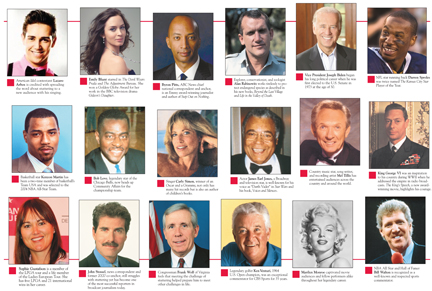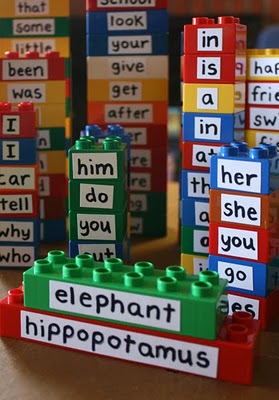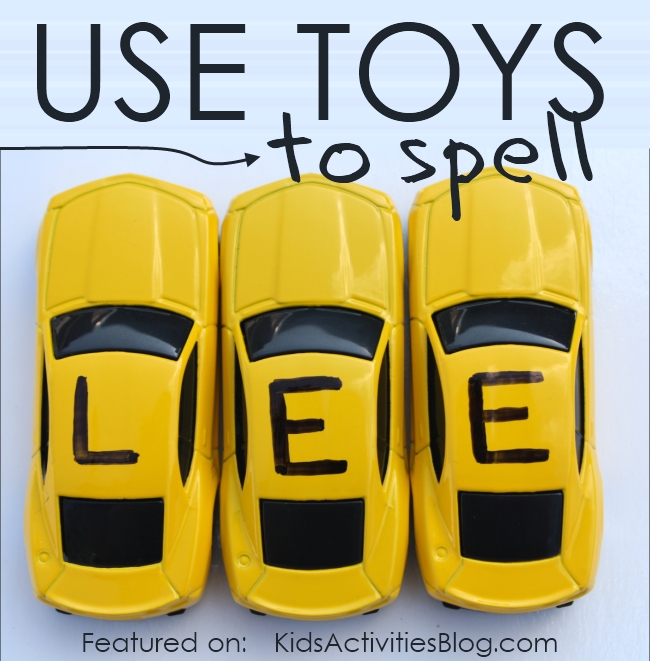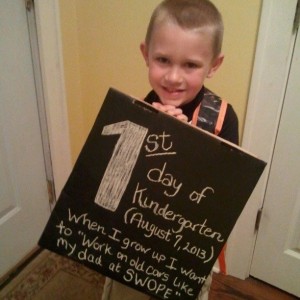“Statistically, more American children suffer long-term life-harm from the process of learning to read than from parental abuse, accidents, and all other childhood diseases and disorders combined. In purely economic terms, reading related difficulties cost our nation more than the war on terrorism, crime, and drugs combined. “We need to reconceptualize what it means to learn to read and who’s responsible for its success if we’re going to deal with the problem.” – Dr. Grover Whitehurst, Director Institute of Education Sciences, Assistant Secretary of Education, U.S. Department of Education (9-10-03 Children of the Code interview).
Speech impairments such as apraxia in themselves are not cognitive nor receptive disorders. However just as some may need specific therapies and strategies to learn to talk, some of the same or other multisensory strategies can be used to help them learn to read, as well as other academic skills. Having a speech impairment such as apraxia can create developmental lags in language which may affect reading and writing. However as we are seeing, when provided the chance, these children are able to make over a year’s gain in a year’s time. Do not underestimate them as they may not just make it, they may excel above neurotypical students if given the chance. There may not be strong evidence in this yet, however through the Cherab Foundation there has been strong anecdotal feedback in this area for over a decade now. There will probably be more evidence once there is more advocacy for the verbal disabled. And as with other impairments, we may learn there are benefits to speech disorders.
Super Memory For Many That Are Verbal Disabled From Childhood
I first noted with my own son Tanner, and have heard from many others, that children with apraxia or other severe impairments of speech like it, appear to have an unusual phenomenal recall from as young as 2 years old. They say there are gifts in any disability. For example from a 2012 article from Scientific American “It’s an oft-repeated idea that blind people can compensate for their lack of sight with enhanced hearing or other abilities. The musical talents of Stevie Wonder and Ray Charles, both blinded at an early age, are cited as examples of blindness conferring an advantage in other areas. Then there’s the superhero Daredevil, who is blind but uses his heightened remaining senses to fight crime.
It is commonly assumed that the improvement in the remaining senses is a result of learned behavior; in the absence of vision, blind people pay attention to auditory cues and learn how to use them more efficiently. But there is mounting evidence that people missing one sense don’t just learn to use the others better. The brain adapts to the loss by giving itself a makeover. If one sense is lost, the areas of the brain normally devoted to handling that sensory information do not go unused — they get rewired and put to work processing other senses.
A new study provides evidence of this rewiring in the brains of deaf people. The study, published in The Journal of Neuroscience, shows people who are born deaf use areas of the brain typically devoted to processing sound to instead process touch and vision. “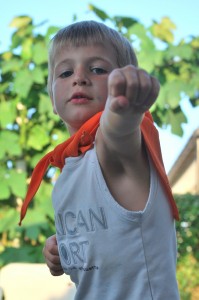 I believe the “gift” of late talking is a superior memory.
I believe the “gift” of late talking is a superior memory.
Here are some common examples you may see in a preschool child as reported through the Cherab Foundation.
- You tell your two year old, “no more cookies tonight. Tomorrow you can have another cookie” The next morning that child wakes up and goes to the place you keep the cookies and points. O
- You drive someplace once and the next time you go there they point out which way to go next on the road.
- Your child is playing with something you want to take away, typically you can find another toy to play with they’ll drop what they are doing to play with the toy you found. They’ll transition nicely to the new toy, but as you get up to leave with the original toy behind your back they’ll point or go behind your back because they saw what you did and didn’t forget about the original toy.
All of these examples are developmentally uncharacteristic for two and three years olds who typically have short attention spans.
As they age the unusual memory persists which can be a huge benefit in academics. There may be a number of theories as to why this is happening in this population. Perhaps while others their age are able to babble and talk about anything that comes to mind, they have to recall what they want to communicate long enough to figure out how to get their needs met. Perhaps it’s due to using a different pathway and developing such pathway -they have an edge we don’t yet understand. No matter the reason, having a great memory is one of the signs of a gifted student. Appreciation of this ability may be able to provide more effective academic strategies for teaching this population of students.
Academics And Apraxia
A common concern among parents of preschool children with speech impairments such as apraxia is that their child doesn’t appear to recall their colors and numbers which they previously mastered. This is in stark contrast to the superior memory just discussed. There again can be numerous reasons for this including a basis in motor planning and feeling pressure. With motor planning, the problem is performing on command. So in other words when asked it may become more difficult. As higher academic abilities are expected at younger and younger ages in children, it should be noted that children during preschool age with speech impairments should be provided the benefit of the doubt. Children with special needs such as apraxia are working hard learning how to communicate in almost daily sessions of speech and occupational therapy. They are probably also in therapy for hypotonia, sensory and/or motor planning deficits. There is strong evidence that learning academics early instead of later makes no difference in the long run. Perhaps even more noteworthy is that there is also evidence that too much academic pressure prior to 6 or 7 years old can be detrimental Here are some research reasons to delay kindergarten when there is a special need.
Those children who read early are no farther along than those who read later. School work could and should take a back seat to therapy during preschool years.
Learning To Read At 7 Is Not Late
Just as the research recommends once my son Tanner did start kindergarten at 6 years old he was one of the top in his mainstream class according to his teacher. It’s important to remember that communication needs become increasingly complex, and as the child with a speech impairment ages, school demands go from simple during kindergarten, to difficult, all within a relatively short period of time. Once a child breaks down in their ability to keep up, they may continue to fall further behind as their peers move on. Years ago in the United States, students in kindergarten students were not expected to be able to read in kindergarten, only to be reading ready. The push for younger and younger academics goes against the evidence for all students, but particularly more so for the rising number of students with communication impairments.
Between the hours spent in intensive therapy, and stress from not being able to communicate simple needs, many children in preschool years don’t have time to be a child. It’s important not to underestimate the importance of play. As the Cambridge University led review which recommends not starting kindergarten until 6 years old states ‘Children have a right to be children’ And when they are ready they can soar ahead.
 My son Tanner started reading over the summer when he turned 7. His first favorite book was “Hop on Pop”
My son Tanner started reading over the summer when he turned 7. His first favorite book was “Hop on Pop”
Through the McKay Scholarship in Florida, after one year in a mainstream kindergarten, we switched Tanner and his brother to the Pine School, a private school. When Tanner started first grade he was the only one in his class who was a beginner reader as most of his friends now were fluent readers since kindergarten. Tanner was one of the only children with a speech impairment in this school. In spite of the fact that Tanner didn’t start working on reading skills until later -Tanner was a straight A student in all subjects. It took lots of hard work, but Tanner rose to the challenge. Read Research Reasons To Delay Kindergarten.
Multisensory Tips For Teaching A Child With Apraxia
The Learning Disability Association emphasizes that no single reading method will be effective for all students. This page contains useful information from the LDA regarding multisensory structured language programs both content and principles of Instruction. There are also less traditional ways to help at home.
Back Writer: In addition to paper, when teaching a child to spell a word, write the letters on their back and have them say each one out loud.
Game Show: Take turns being the contestant and game show host on a Spelling Bee “show”. We’d jump up and down and act just like they do on game shows. Everyone in my family would take turns playing the game and if Tanner was a contestant all of us except Tanner would spell the answers wrong so that Tanner was the one contestant to spell it right and win. If Tanner was the game show host, one of us would get it right, but the rest would spell it wrong. We would try to spell the word in a way most would misspell it. This would make Tanner laugh and he had to correct us.
Teacher: Just like the game show we’d also play school and take turns being the teacher or the student. Most times Tanner was the teacher and I’d be the student who would always spell the word wrong. Tanner would have to teach me about silent letters, as well as why certain letters make various sounds. As many times as I got it wrong, he’d laugh each time.
The Rhyme Game: We would sit at dinner and I would say “Let’s play a game. I’m going to say a word and everyone change one letter to make another word” We’d go around the table and each person would play or pass. You can also do this using actual letters, but I recommend refrigerator magnet letters on a magnetic white board. They are fairly inexpensive and then you can play in the car too. It took my son with apraxia awhile to want to play. For the longest time he just sat and listened to and watched us, but as time went on he joined in the fun. Other rhyming activities include children’s rhymes such as Itsy Bitsy Spider, books like those by Dr. Seuss, and music with rhymes such as Kidsongs The Name Game.
Break It Down: Even though Tanner would spell each word correctly one at a time when the same words were put in a sentence he broke down and spelled words he knew incorrectly. Just like when he learned to speak the longer the utterance the more the difficulty it appeared. So I used the same motor planning strategies I had learned helped him in speech therapy. Once I told him to think of each word separate he would spell them correctly. And the same went for individual words. When Tanner first started reading more complex words, such as for example, ‘circulatory’, he would require a cue to break it down. He started to come up with his own motor planning tips after awhile. I would say, “Just break it down Tanner and think of it as four words” Tanner would spin a wheel, or clap his hands, or another motor planning trick to break it down.
Cue The Reading: There are times the child’s speech impairment can inhibit their ability to read certain words out loud. I found that if I used the classic motor planning strategy we used for speech, I clap my hands, or provide a similar motor planning cue, he’d be able to say it correctly. Once he did say the word correctly I’d have him repeat it at least 3 times telling him to help get it into his motor memory. As time went on he was able to cue himself when needed.
 Confidence Books: Again Dr. Seuss books were ver popular in my home and I found them to be excellent for my son with apraxia. Even if it’s a memorized book, it’s good for a child with apraxia to have what I call a confidence book that they can read.
Confidence Books: Again Dr. Seuss books were ver popular in my home and I found them to be excellent for my son with apraxia. Even if it’s a memorized book, it’s good for a child with apraxia to have what I call a confidence book that they can read.
Before your child can read at all, I recommend a book called ‘Hug’ by Jez Alborough. Almost every page has one word on it, the word”Hug” which can be said in all different ways with different voices and meanings.
When my son was learning to read at 7, he’d like to turn the pages of the book Hug and read to us. At first, he just read the word the same way throughout and then he started to get creative with how he said the word hug. To build confidence you can comment on “how advanced” your child is to be able to “read an entire book!” also saying “Look how big of a book it is!” This is why Hug is a great confidence book for warming up.
As your child progresses so do their confidence books. For my son Tanner, after Hug was Dr. Seuss, and then Danny and the Dinosaur. The warm up of today will be your child’s “hard” book of yesterday. For apraxia I found providing a warm-up book first seemed to help with motor planning for the more complex books, however, all children benefit from confidence.
Sound Model Reading: After my son read his confidence book alone, we’d read a more difficult book together. I would let my son try to sound out the words, but mostly I would read a sentence at a time and have him repeat it back as I pointed to each word. I would do this as a model, similar to what we do with speech therapy for speech. Based on the research about those with severe speech impairments or stroke who couldn’t talk but could sing, I would use a fun singsong voice when reading. I would also use creative voices, think cartoon character voices, and because I used to work in the animation industry this was right up my ally too! I took the focus off reading and put it onto ‘how’ it was read. If he was stumbling on reading I would say “read with feeling” and while he worked on how he read it I noted his reading ability improved. I would compliment the way he was reading “Wow you can be an actor you read that so well!”. It appears to be a way to trick the brain into using another area. There are numerous actors with speech impairments like stuttering who are able to read and memorize scripts and talk perfectly! Some of these include Bruce Willis, James Earl Jones, Julia Roberts.
Famous People Who Stutter
Fun With Letters: They’re, their, there…are some things in the English language that just don’t make sense. My son Tanner came home from school one day so upset because he didn’t understand why they’re, their, and there were all spelled differently, but pronounced similar with very different meanings. He threw his book in frustration and said at the time “dare, dare, dare, stupid, same thing!” Instead of correcting him, I agreed with him. I picked up his book and said, “Tanner you are absolutely correct. It is stupid that these words sound similar and have three very different meanings. They should be three different words. However, unlike all the other students you have a head’s up on this that they don’t. You have a phenomenal memory! So while other kids have to learn it, you don’t have to. All you have to do is remember that when…” And from there I taught him very simply the difference between the three. He never mixed them up again.
For silent letters I’d tell my son, “like you they are learning to talk and want to be there with their friends, the other letters who make lots of sounds” or “The H has apraxia and is still learning to talk, but you’ll hurt it’s feelings if you forget he’s there.” Using tricks like this will greatly reduce frustration on both their end and yours and you are able to work with what they know.
Closed Caption
Used closed caption on all of your TVs even if your child isn’t watching it. Research has found that the younger siblings or deaf children read earlier. Here is a clip of some of the research
Despite a decade of extensive research linking the use of video subtitles to improved children’s reading skills, the majority of teachers and schools remain unaware of the potential, and what is a significant opportunity to overcome poor reading skills in the classroom
There has been so much successful research into the many benefits and uses of subtitles and captions on video and Television that the American government has recognized the need for subtitles and captioning, and important laws have been passed which mandate its availability.
That research has demonstrated that the benefits of subtitles and captions include:
- Subtitles and captions help children with word identification, meaning, acquisition, and retention.
- Reading subtitles is motivating to reading.
- Subtitles and captions can help children establish a systematic link between the written word and the spoken word.
- Pre-readers, by becoming familiar with subtitles and captions, will have familiar signposts when they begin reading print-based material.
- Subtitles and captions have been related to higher comprehension skills when compared to viewers watching the same media without them.
- Children who have a positive experience in reading will want to read; reading subtitles and captions provides such an experience.
- Reading is a skill that requires practice, and practice in reading subtitles and captions is practice with authentic text.
- Subtitles and captions provide missing information for individuals who have difficulty processing speech and auditory components of the visual media (whether this difficulty is due to a hearing loss or a cognitive delay).
- Students often need assistance in learning content-relevant vocabulary (in biology, history, literature, and other subjects), and with subtitles and captions they see both the terminology (printed word) and the visual image.
- Subtitles and closed captioning is essential for deaf and hard of hearing children.
- Subtitles and captions can be very beneficial to those learning English as a Second Language.
- Subtitles and captions can help those with reading and literacy problems, and can help those who are learning to read.
The first Research formally published by the Department of Education in the United States in January 2013 into the link between the use of substitles on video and the ability to improve childrens Reading and Literacy skills.
http://files.eric.ed.gov/fulltext/ED538460.pdf
Profiting from empowerment
International Journal of Education and Development using Information and Communication Technology (IJEDICT). Vol. 1; Issue. 4, pp. 18-29.
http://ijedict.dec.uwi.edu/viewarticle.php?id=74&layout=html
Same-Language-Subtitling (SLS): Subtitled Music Video by Wayne Greg McCall
http://editlib.org/noaccess/32054
E-Karaoke Learning for Gender Empowerment in Rural India
Information and Communication Technologies and Development, 2006. ICTD apos;06.
http://www.academia.edu/363716/E-Karaoke_Learning_for_Gender_Empowerment_In_Rural_India
Karaoke for social and cultural change
Journal of Information, Communication and Ethics in Society. Vol. 4; Issue.3, pp 121-130.
http://www.academia.edu/363715/Karaoke_for_Social_and_Cultural_Change
Research Documentation (PlanetRead) Dr. Brij Kothari
https://www.planetread.org/images/pdf/research/SLS_on_TV_in_India.pdf
Can India’s “literate” read? – Research Article Brij Kothari – 2011 –
http://www.planetread.org/pdf/Can%20India’s%20’literate’%20read.pdf
Overview Article (2008)
Impact Study – Same Language Subtitling on TV:
Impact on Basic Reading Development among Children and Adults(2007, Draft)
http://www.planetread.org/pdf/SLS_Impact_Study_Jan_2_2008_Literacy.pdf
Same Language Subtitling: Research Summary (2007) – Some Key Findings
http://www.planetread.org/pdf/Research%20Summary_SLS.pdf
Research Article (2004) – SLS on Television in India
http://www.planetread.org/pdf/SLS_on_TV_in_India.pdf
Research Article (2002) – SLS: a butterfly for literacy?
http://www.planetread.org/pdf/Journal%20of%20education.pdf
U.S. Research Studies I & II of the AVAILLL Program
http://www.availll.com/pdfs/abstractsEachStudy.pdf
Movie-based programme a boost for struggling readers’ literacy
http://www.availll.com/pdfs/newsRelease.pdf
The AVAILLL programme: Using popular film subtitles to enhance literacy outcomes for youth offenders (New Zealand)
http://www.availll.com/pdfs/BEEBY%20Report%2022March%202012.pdf
The Availll Queeensland Study (Australia)
http://www.availll.com/pdfs/Queensland%20Study.pdf
Raising Adolescent Reading Achievement – The Use of Subtitled Popular Movies & High Interest Literacy Activities
http://availll.com/pdfs/Raising%20Adolescent%20Reading%20Achievement.pdf
Implementing the AVAILLL Literacy Programme at Wesley College, Auckland New Zealand in 2012
http://availll.com/pdfs/Wesley_College_Year_9_Report.pdf
Closed Captioned TV: A Resource for ESL Literacy Education.
http://www.dcmp.org/public_content/caai/nadh210.pdf
Effects of Watching Captioned Movies on Vocabulary Development of EFL Learners
The Turkish Online Journal of Educational Technology
http://www.tojet.net/articles/v8i2/824.pdf
On-Screen Print: the role of captions as a supplemental literacy tool
http://www.appstate.edu/~koppenhaverd/rcoe/f10/6575/read/linebargeretal10.pdf
Adult literacy: captioned videotapes and word recognition
http://dl.acm.org/citation.cfm?id=919689
The Effect and the Influence of the Use of Video and Captions on Second Language Learning
http://search.informit.com.au/documentSummary;dn=997746379301329;res=IELNZC
Television Literacy: Comprehension of Program Content Using Closed Captions for the Deaf
http://jdsde.oxfordjournals.org/content/6/1/43.short
ARTICLES
Watch and learn – How music videos are triggering a literacy boom
http://www.boston.com/bostonglobe/ideas/articles/2010/09/19/watch_and_learn/
Hollywood helps kids to read
http://www.nzherald.co.nz/nz/news/article.cfm?c_id=1&objectid=10884425
ILove Subtitles Blog
http://iheartsubtitles.wordpress.com/tag/education/
Read Captions Across America!
http://www.dcmp.org/ai/readcaptionsacrossamerica/articles_read_captions_across_america.html
Educators Flocking to Finland, Land of Literate Children
A 1991 worldwide study of 9-year-olds found that Finnish students read the best. One reason is that Finland produces few television programs of its own. Children learn from cartoon subtitles, flashing so quickly that word recognition, not sounding out, is the only way to read.
Closed Captioned Television: A New Tool for Reading Instruction
http://www.tandfonline.com/doi/abs/10.1080/19388078509557842
Captioned Video and Vocabulary Learning: An Innovative Practice in Literary Instruction
http://www.appstate.edu/~koppenhaverd/rcoe/f10/6575/read/koskinenetal93.pdf
Television Captioning: A Vehicle for Accessibility and Literacy
http://www.dinf.ne.jp/doc/english/Us_Eu/conf/csun_99/session0057.html
Using television for literacy skills
http://www.audaciousideas.org/2008/02/using-television-for-literacy-skills/
VIDEOS
See ex-President Bill clinton recognising the research and work of Dr.Brij Kothari into the use of subtitles on video to improve children’s Reading and Literacy skills in India.
Brij Kothari explains in this video how he uses subtitled karaoke video to help the 300 million or so Indians who can’t read or write. It’s sad that people in India can take advantage of this research, yet there is so little awareness of this opportunity & benefits in classrooms and schools in the U.S.
Captions, English subtitles that also describe sounds, are essential for Deaf and hearing impaired students and improve comprehension for ESL students, struggling readers and children with learning disabilities. They are already available on many DVDs, online videos and TV shows used in class.
Dr. Scott Hollier from Media Access Australia gives a presentation on web and application accessibility to the Australian Broadcasting Corporation
http://www.youtube.com/watch?v=ThzAJs0nLxM&
Reach Every Viewer with Captioning
OTHER WEBSITES
How TV Captions Help Learning to Read
http://www.captionsforliteracy.org/how_captions_help_learners_to_read.htm
Captions in the classroom: a hidden literacy tool
http://www.mediaaccess.org.au/latest_news/captions/captions-in-the-classroom-a-hidden-literacy-tool
A wealth of research on this here
Motor Planning To Reading Games
For long words, we’d break it up into smaller words. We’d use the same visual or auditory cues to teach long words in reading that we used to teach long words in speech such as clapping, moving fingers for each sound. If for example, your child is trying to read the word “snug” don’t break it down to the letters s -n -u- g. Instead, break it down into “Sn” “u” “g” and use a motor planning cue such as moving one finger for each of the three sounds.
Here are a few games you can use with the above strategy to help with the motor planning needed to read. Let your child physically push the various letters or sounds together as they make each sound.
Three-Letter Words Puzzle Card
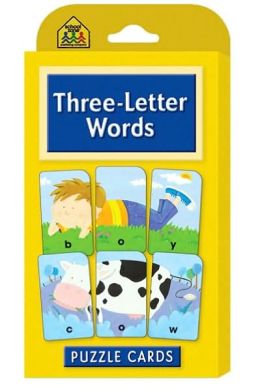 Three-Letter Words Puzzle Cards show images and letters that children put together in sets of three. Each correct match-up creates a fun-filled picture and spells a word. There are 36 sets of three-letter words.
Three-Letter Words Puzzle Cards show images and letters that children put together in sets of three. Each correct match-up creates a fun-filled picture and spells a word. There are 36 sets of three-letter words.
Repurposing Legos into beginning spelling/reading aids
From the website “All I did was sit down one evening with a bunch of white stickers and write out a load of easy words. Sight words and words that my kids can already read or sound out. It took a while to write and cut them all, but it was very cheap, and we were lucky enough to have a mate we’d not seen in years staying with us that night, so we all sat around and chatted until about 3 am while I stuck all these words on the blocks. For some of them I put the opposites on the other side of the block, like “love” and “hate” or “big” and “small” and for others I put complimentary words like “his” and “her”, so that the kids could change sentences they made easily by switching around a block. I had a couple of long blocks, so used them for entertaining long words.”
Use Toys To Spell
As featured on the KidsAcitivitesBlog you can as they suggest write with a sharpie marker onto toy cars that your child can push together, or attach pieces of paper to the tops of the cars as you did with the Legos where you can even add short words to put together compound words or even sentences depending on the complexity your child needs.
Shake Of The Day
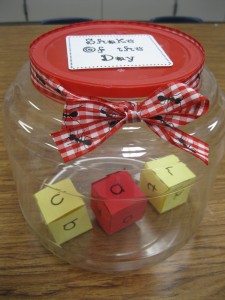
From the website:
What are some other “Shake of the Day” ideas:
- Shake all vowels
- Shake 2 words that rhyme
- Shake a picture and the letter of the beginning sound of that picture
- Addition or Subtraction
- 3 numbers in a row/example 4, 5, 6
- 3 dots / 3 / three
Video Gaming As Motivation
Even though the research has validated that video gaming may help with motor, and hand eye coordination, I have found video gaming is highly motivational for reading and writing (typing) for various games as well. Another plus is if you have a child with a speech impairment, video gaming is a great way for children or adults to socialize today that doesn’t take much speech. More information including the research here.
Their Own Road For Learning
My son Tanner has been mainstreamed since kindergarten, but as documented in an article for Kid’s Enabled he was interviewed for, early on he had to work very hard. But it was clear he always had his own way of figuring things out regardless of what he was taught.
For example, in first grade, Tanner’s teacher said to me “It’s odd because developmentally children at Tanner’s age need visual cues for math, but he doesn’t. Tanner’s just doing it in his head and I don’t know how”
Of course we all asked him how he did it and at first, he would just say he didn’t know. For a speech impaired child, this could have meant anything from he didn’t know to I don’t know how to tell you. As his speech improved, however, he was able to tell us, and it had to do with his super memory.
Here is an example of homework he at the time thought was “so easy” but nobody could figure out how he was doing it. On the page, it said 6 + 7 + 6 = ___ Tanner looked at it and said “That’s so easy it’s 19” He never added up anything on the paper so I said, “Tanner how do you know it’s 19?” He pointed to each of the three numbers on the paper and said “5, 10, 15 and then 1 plus 2 plus 1” In other words he knew that there was a 5 in each of the three numbers so he auto knew it was 15 -and to that number he added the extra 4. He was not taught this method in school, and nobody quite knew where he learned it from.
Early on Tanner memorized math problems like 9 + 9, 8 + 8, even 12 + 12 etc. which is why he tested so well. And he works around those problems he doesn’t have memorized yet by using those he does. For example, if you say 9 + 8 -he doesn’t use his fingers like some kids do -he either quick thinks of 9 + 9 or 8 + 8 and then using his method either adds or takes away one to get the right answer. He seems to do this until he memorizes which in his case doesn’t appear to take that long.
Sick, Stressed, Or Tired They May Break Down
For any special need when sick, stressed or tired there may be a regression. Sometimes those that are not aware of this may believe it’s due to a learning disability or a regression. Again always best to provide the child with the benefit of the doubt, especially in light of Dr. Robert Rosenthal’s research. I have a perfect example which happened in first grade where Tanner was mainstreamed. He again with his memory had memorized all the math tables up to 12 due to flash cards we had. This included not just addition and subtraction, but also division and multiplication. His entire class had a “mad minute” on one of the first days of school which wasn’t even at that time with multiplication and division. The teacher wanted to get an idea where her class was academically. Tanner failed it because he didn’t complete but a few lines of basic addition and subtraction.
I got a call from his teacher and when I heard the test was timed I just knew they were timing him and he panicked. So when he got home I said to him “Tanner heard you did the mad minute in school the other day that’s awesome!!! They know kids get nervous with being timed and as we live in Florida now your school is getting you prepared for us to be on Nickelodeon’s family double dare!!! If you win you’ll get lots of cool prizes but if you lose that is fun too -you’ll get to be slimed!!! Remember how good it’s supposed to taste?!” And then we talked about it -we had a membership to Universal Studios here in Florida and so he knew all about it.
I never went over his math tables with him that night as I knew he already mastered it all. I took the pressure off. The day the entire class was given the mad minute again, and not only did Tanner get 100% but told me he was the first one finished in the class.
Sparking the Motor Planning
Another strategy was to make sure that Tanner was “on” each day prior to school. Tanner for example at one point could read a word like ‘oxygen’ correctly and without hesitation, but when not warmed up will come to a word that he typically knew and that is really easy like ‘at’ and read it as “ate” instead. Or even come to a word like ‘the’ and ask “what’s that word again?” When I used to correct him he says “Oh that’s right, I forgot” The kid with the amazing memory in so many other areas. It was almost like a block, so I am guessing it’s a motor planning block.
I never make a big deal of it as I know stress would break him down further, so just focused on “reading with feeling” which is the strategy I have above. Just like it was never there -he starts reading perfectly. That is until the next day when he needs another warm up to get his motor planning sparked again. Not sure if I should call it that- but just like speech there appears to be some overlaps in the unusual patterns of reading. On the way to school in elementary school, he’d read out loud at least one page to get his motor planning for reading ready for school. It could be a page from the book “Puppy Puzzle” or “Harry Potter”as it didn’t appear to matter. Once his motor planning for reading was ‘on’ Tanner was able to read just about anything.
Nutritional Strategies For 13 Years Old With Apraxia
My son at 13 years old was considered a success, but there were issues. He was mainstreamed and I no longer had him in speech therapy even though he would once in a while see a therapist. He accepted how he spoke, and so did we. We accepted that he could communicate well enough to have friends, be in school mainstreamed without support, read the menu and order his own food at a restaurant. And we also knew that nobody would know Tanner had a speech issue if he kept his answers short- not unless he let his guard down and tried to talk in complex thoughts.
He had years of hard work from 2 years old from both private and school based speech and occupational therapies. From 3 years old he also was provided complimentary therapies including hippotherapy, craniosacral therapy, Vital Links Therapeutic Listening therapy. Up till this point, the main complimentary therapy we found success with were fish oils, a nutritional strategy which he had been taking since 3 years old. This was what happened when he fist started fish oils as documented in Dr. Stordy’s book LCP Solution; The Remarkable Nutritional Treatment for ADHD, Dyslexia, and Dyspraxia. Up till 13, this is where our son was, and with his diagnosis, he was considered at this point a huge success. Within one year of adding an all natural GFCF food product, he had normalized and the following few quirks that everyone including his doctors, therapists, and teachers had previously accepted were gone.
- Lags in both reading and writing. He was on level on both and tested to be above average in his concepts -but his expression was lagging. Reading out loud or writing was not enjoyable to him and I had to work with him with his homework. It was a struggle.
- He didn’t pick up abstract type humor if we were watching adult TV shows like for example The Office. He was more literal- he enjoyed America’s Funniest Home Videos for example.
- He was also literal in his ability to listen. If a teacher said he had to do something like unplug unused appliances around the house to help save the planet- he would unplug appliances around our house and if I asked him what he was doing he would say “Mom don’t you care about planet Earth?!” If the teacher said “OK class after we are done I don’t want anyone to leave until you help me clean up” Everyone would leave when they were done and I was told by a few very proud teachers that “He was the only one that helped me” I was the strange parent that wasn’t happy to hear that compliment. I knew he wasn’t normal and wanted him to stray into abstract thought a bit more!!
- His ability in sports was clumsy but committed. Poor little guy would push himself till he was literally exhausted but his abilities were far short of other boys his age. He didn’t run well, nor would you use the word effortless or graceful to describe him when he was playing sports. While his brother and all the other neighborhood kids wore Heelys and used skateboards, Tanner would have his own but would never use them. His reflexes were sluggish as well.
- He would tire easily and take naps when home from school.
- Tanner never felt pain like others. He was called the “tough kid” when he got shots because he didn’t cry, but he would say “ow” and cringe away if you tickled his arm, or patted his head. A few years ago he was at a sleepover and broke his finger playing football, but the family didn’t know it was broken because he didn’t tell them he hurt it. The next day when I went to pick him up he wanted to stay and swim, still not saying anything was wrong with his finger. The only reason I found out was because he couldn’t “really bend it” anymore so I took him to the hospital where even when the doctor touched where the break was he didn’t flinch, but it was a broken finger.
.My son within one year on had progress in so many areas across the board that were so profound that anyone who saw him was shocked. He quickly developed a tremendous surge in complex language, independence, and excellence in academics, grace and abilities in sports in basketball, football to the point if you didn’t know it was him you’d never know it was him on that field, quick reflexes, fully developed mature abstract sense of humor that he both understands if he hears it and knowledge in how to make others laugh in this area, passion for music, interest in current events and wanting to discuss them, tremendous growth from a stocky 5 foot 7 slightly overweight child who had been on a healthy organic diet but was that way regardless to a muscular six foot one 14 year old. One thing he wasn’t thrilled about but the rest of us were, was that he also began to feel pain normally
Each year he progressed up in school and when he started high school he was recommended for honors classes including honors English too. His first year he gave a verbal report in school and got an A and he just wrote to YADA about it. (clip) “I’m not in speech therapy. I gave a verbal report today and the teacher wrote down that I was nice and loud and with a clear voice. Sometimes if I am tired my speech messes up.”
In the next four years, Tanner who grew to an athletic looking six foot six remained mainstreamed in a public HS in honors placement with no IEP or accommodations for the past 4 years. He has a 3.3 GPA and is working hard to raise that to a 3. 5 at least. (by his senior year in HS he raised it to a 3.8) He’s on debate and loves it even though it’s difficult for him as his speech may still break down under the pressure of competitive speaking. His goal is to become a special education attorney to help others like him going ahead. Again here is his interview from Kid’s Enabled from a few years ago.
Tanner is not the only one with success stories. Above is a photo of Colton who even with a diagnosis of apraxia may be graduating speech therapy shortly according to his therapists. s a video of Colton at 4.
If your child is school age and you are having IEP/academic issues where the school professionals believe your child is not keeping up, needs to be held back, reclassified etc. and you don’t agree, seek private testing from professionals who are knowledgeable about verbal impairments. I have found those that work with the hearing impaired are generally more aware and have less stigma in assuming that verbal impairments go hand in hand with learning disabilities. Ability to verbally express yourself and IQ do not go hand in hand. All one has to do to learn this is watch any daytime court TV show. Also please look at the links for advocacy help on the Speech Therapy Matrix which was developed for school-based SLPs. Some tend to believe that the academics are unique from the original diagnosis. They may be, but just as well may be directly linked to the original diagnosis or an issue again created by a developmental lag.
- From Struggles With Apraxia To Honors English
- The Communication Book
- Reading And Academic Abilities For Those With Speech Impairments
- Curriculum Resources and Multisensory Approaches
- Speech Therapy Matrix For School Based SLPs
- Research Reasons To Delay Kindergarten
- Addressing Apraxia of Speech in the IEP
- Dealing with IEPs for a Speech Impaired Child
- IEP Goals, Objectives, and Sample Letters to Teachers
- The Pediatrician’s Role in Development and Implementation of an Individual Education Plan (IEP) and/or an Individual Family Service Plan (IFSP)
- Multisensory Teaching Tips From Pinterest
- Educational Fun Ideas from Pinterest
- Information From Our Group To Help Those With Apraxia, Autism, And Other Special Needs
LISA GENG
Lisa Geng is an accomplished author, mother, founder, and president of the CHERAB Foundation. She is a patented inventor and creator in the fashion, toy, and film industries. After the early diagnosis of her two young children with severe apraxia, hypotonia, sensory processing disorder, ADHD, and CAPD, she dedicated her life to nonprofit work and pilot studies. Lisa is the co-author of the highly acclaimed book “The Late Talker” (St Martin’s Press 2003). She has hosted numerous conferences, including one overseen by a medical director from the NIH for her protocol using fish oils as a therapeutic intervention. Lisa currently holds four patents and patents pending on a nutritional composition. She is a co-author of a study that used her proprietary nutritional composition published in a National Institute of Health-based, peer-reviewed medical journal.
Additionally, Lisa has been serving as an AAN Immunization Panel parent advocate since 2015 and is a member of CUE through Cochrane US. Currently working on her second book, “The Late Talker Grows Up,” she also serves as an executive producer of “Late Talkers Silent Voices.” Lisa Geng lives on the Treasure Coast of Florida.

